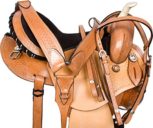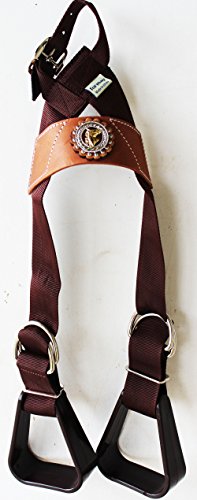Throughout the year, tending to your horse’s needs requires you to be prepared for a variety of conditions.
When the temperature falls and the winds grow colder, you should be prepared with the proper gear, supplies and accessories to keep your horse healthy and happy during the upcoming months.
The following tips are designed to help prepare for the winter weather and keep equine warm all winter long.
WATER AND FOOD
Food digestion is a primary source of warmth for a horse, which means the caloric needs can increase during the colder months. Use quality forage, combined with grain, as recommended by an equine nutritionist to sustain warmth, and maintain caloric intake.
Even though horses might eat snow while outside, fresh water is still important for wintertime hydration. A supply of non-frozen water, ideally above 45 degrees, will keep the horse hydrated and aid in digestion.
Healthy teeth and a healthy mouth allow a horse to drink and eat without discomfort. Have an equine veterinarian check horses’ teeth and mouths to ensure they can eat comfortably and maintain the right caloric intake for weight maintenance throughout winter.
COMFORT AND WARMTH
If possible, allow a horse’s natural coat to grow during the winter months. Its thickness provides the horse with the extra insulation needed to keep its body warm as the weather gets colder, as a layer of warm air is trapped below the surface.
If there are times when you must clip your horse’s coat to keep them cool while working in the winter or in preparation for a show, a waterproof, breathable blanket or coat can add an extra layer to keep the horse warm.
The warmest natural coat isn’t always enough to protect a horse from cold temperatures, however. A strong wind can cut right through it, and a wet coat can quickly lose its insulating ability. Providing shelter from wind, snow, and rain can allow the horse to enjoy pasture time and still have access to an area that will protect it from the elements.
When riding during the winter months, be sure to warm the horse up properly and ensure any sweaty areas are fully dried afterward, since this can cause the horse to become chilled.
Likewise, maintain riding tack and saddles properly so that they don’t become cracked and dry from the cold air, causing them to become less effective.
TENDING TO HEALTH
Consult with an equine veterinarian for wintertime parasite control. Once the first frost has occurred, you may want to give your horse something to kill bot larvae.
People and horses aren’t the only creatures that seek warm places in wintertime. Other pests are likely to find their way into the barn. Discourage and control pests by keeping food storage in sealed containers.
Likewise, store blankets, leather products and other materials that could be used for nests in sealed storage spaces.
Good health is pivotal to staying comfortable and warm from the first frost until the temperatures begin to rise again. Part of the effort to maintain horse health should include any necessary vaccinations as autumn transitions to winter.
Hoof growth occurs throughout the year and should be maintained year-round. Consider having a farrier use winter studs for traction and snowball pads to keep snow from accumulating inside the bottom of the hoof.
WINTERTIME STORAGE
In conjunction with preparing your horse for winter, you can also be prepared by getting organized and ready to spend quality time with your equine friend.
Organizing barn storage space can help avoid wasting time searching for supplies, which can then be spent grooming or caring for the horse.
Make it easy to access everything that is needed throughout the winter months by putting away the seasonal items that won’t be needed again until spring.








Comments
Comments are disabled for this post.